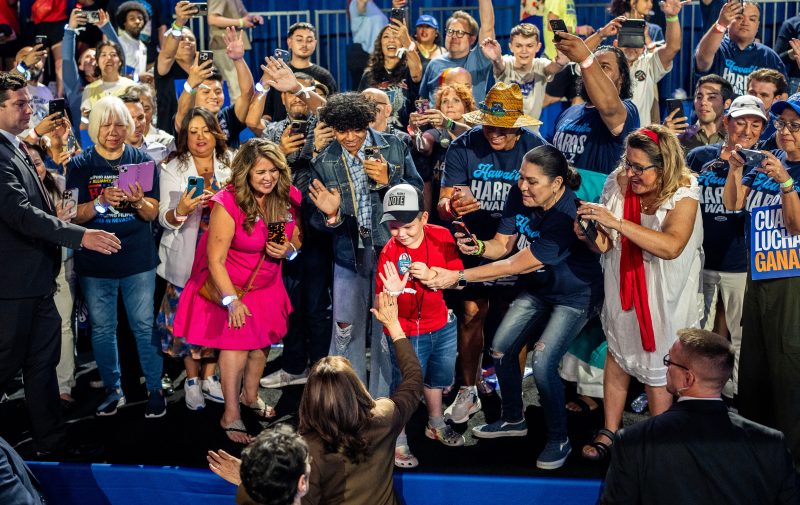
Is Harris’ Campaign Outshining Trump’s? And What Does It Mean?
In an unprecedented political climate where every move is under intense scrutiny, the upcoming presidential election has turned into a battle of campaign tactics and strategies. In this high-stakes game, it seems that Senator Kamala Harris is running a much bigger campaign than President Donald Trump. The question remains: will it matter in the end?
Harris’ campaign has been marked by a relentless focus on reaching out to a diverse range of voters. She has made it a point to connect with various communities, displaying a keen awareness of the importance of minority groups in swaying election outcomes. By actively engaging with a wide array of constituents, Harris has shown a commitment to building a broader base of support that goes beyond traditional party lines.
Meanwhile, Trump’s approach to campaigning has largely mirrored his 2016 strategy, relying heavily on rallies and social media presence to drum up support. While this may have worked in the past, the shifting political landscape demands a more nuanced approach. By overlooking the need to appeal to a wider demographic, Trump risks alienating potential voters who may be swayed by a more inclusive message.
Another key aspect where Harris seems to have the upper hand is in fundraising. Her campaign has managed to amass a substantial war chest, allowing her to invest in a robust ground game and advertising blitz. This financial advantage gives Harris the resources needed to compete in battleground states and mobilize voters leading up to Election Day.
Conversely, Trump’s fundraising efforts have faced challenges, with reports indicating a significant gap between his campaign’s coffers and those of the Democratic candidates. While Trump’s loyal base of supporters may help offset some of these financial disparities, the sheer magnitude of Harris’ fundraising prowess presents a formidable obstacle for the incumbent president.
In terms of messaging, Harris has honed in on key issues that resonate with voters, such as healthcare, racial justice, and economic equality. By articulating a clear vision for the future and offering concrete policy proposals, Harris has positioned herself as a serious contender with a plan to address the pressing challenges facing the country.
On the other hand, Trump’s messaging has been marred by controversy and divisiveness, with his bombastic rhetoric often overshadowing any coherent policy agenda. While this approach may energize his base, it risks turning off undecided voters who are seeking a more substantive and inclusive platform.
As the election draws nearer, the contrast between Harris’ expansive campaign and Trump’s more insular approach becomes increasingly apparent. While the size and scope of a campaign do not guarantee victory, they can certainly influence the outcome by reaching a broader audience and mobilizing support across various demographics.
Ultimately, the effectiveness of campaign size and strategy lies in their ability to sway voters and rally support. In a highly polarized political landscape, the candidate who can best navigate these challenges and appeal to a diverse range of constituents will likely emerge victorious. Will Harris’ bigger campaign be the deciding factor, or will Trump’s unconventional tactics once again defy expectations? Only time will tell as the race for the White House intensifies, shaping the future of American democracy for years to come.
